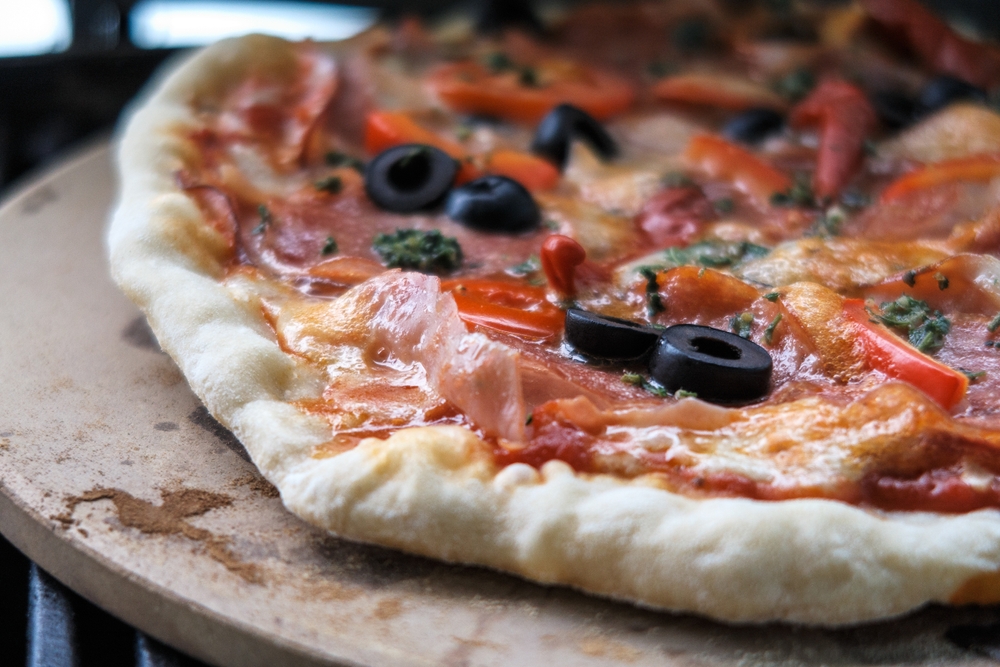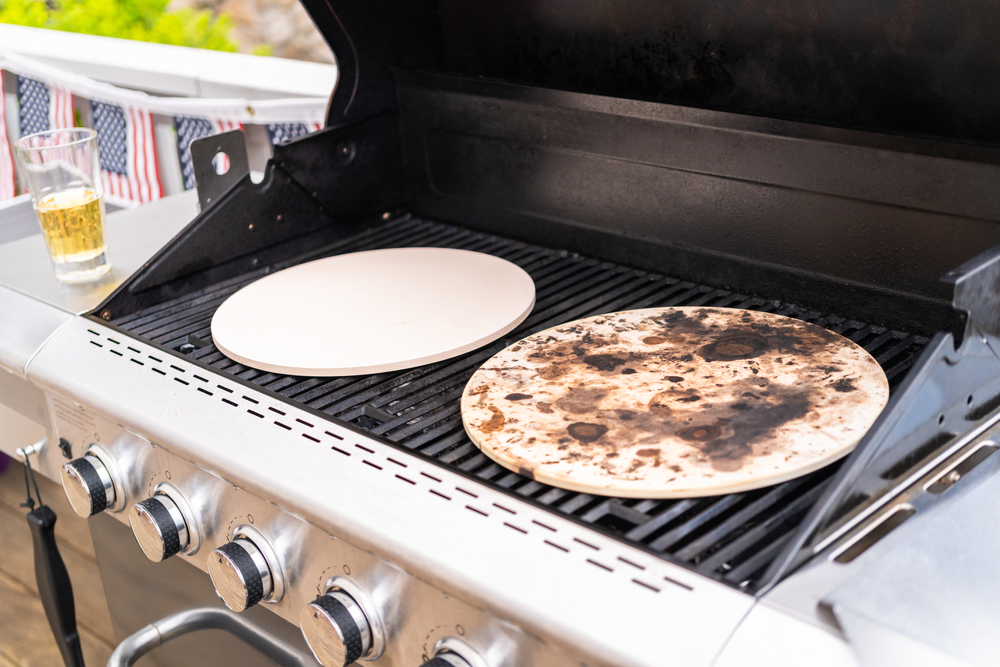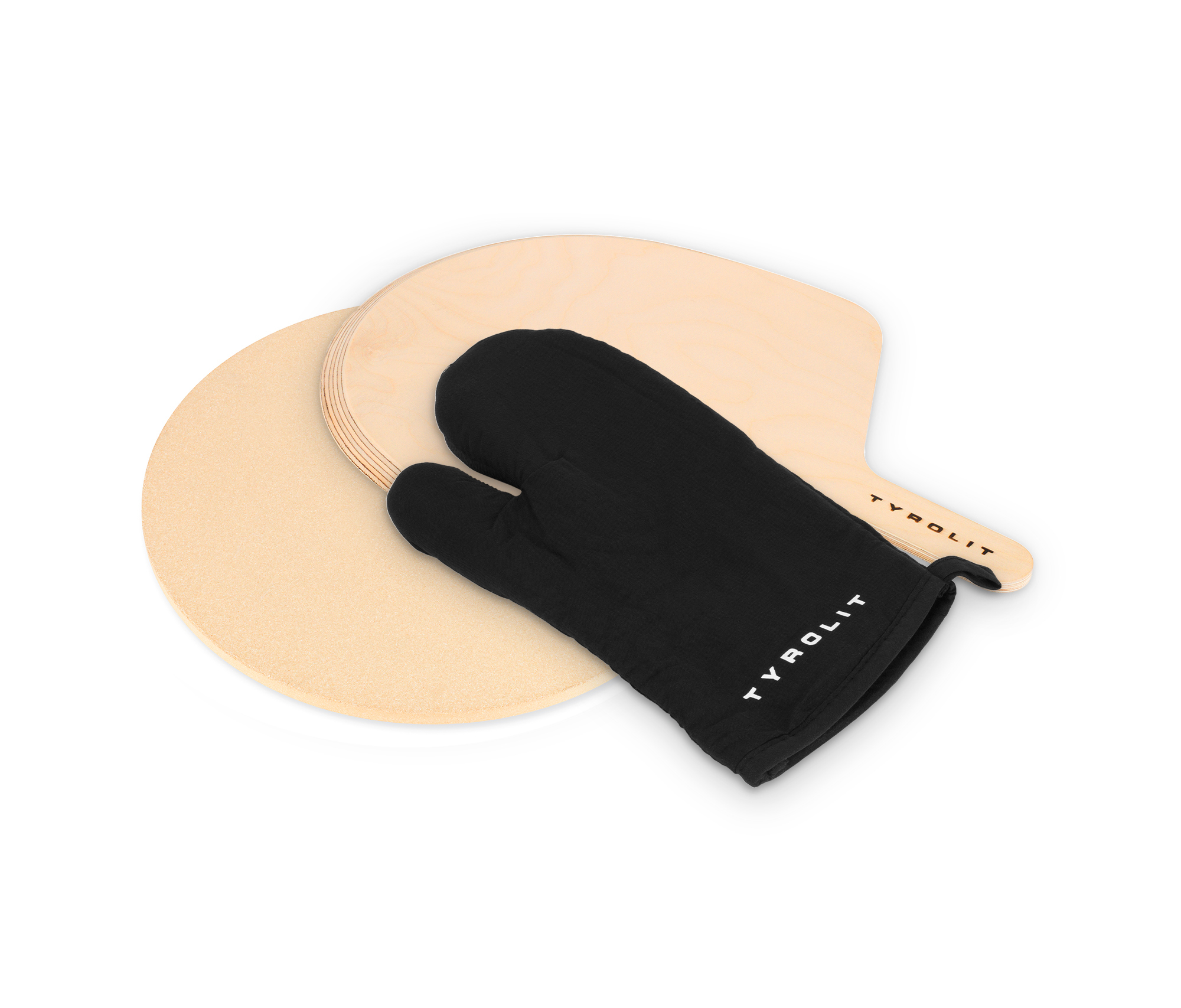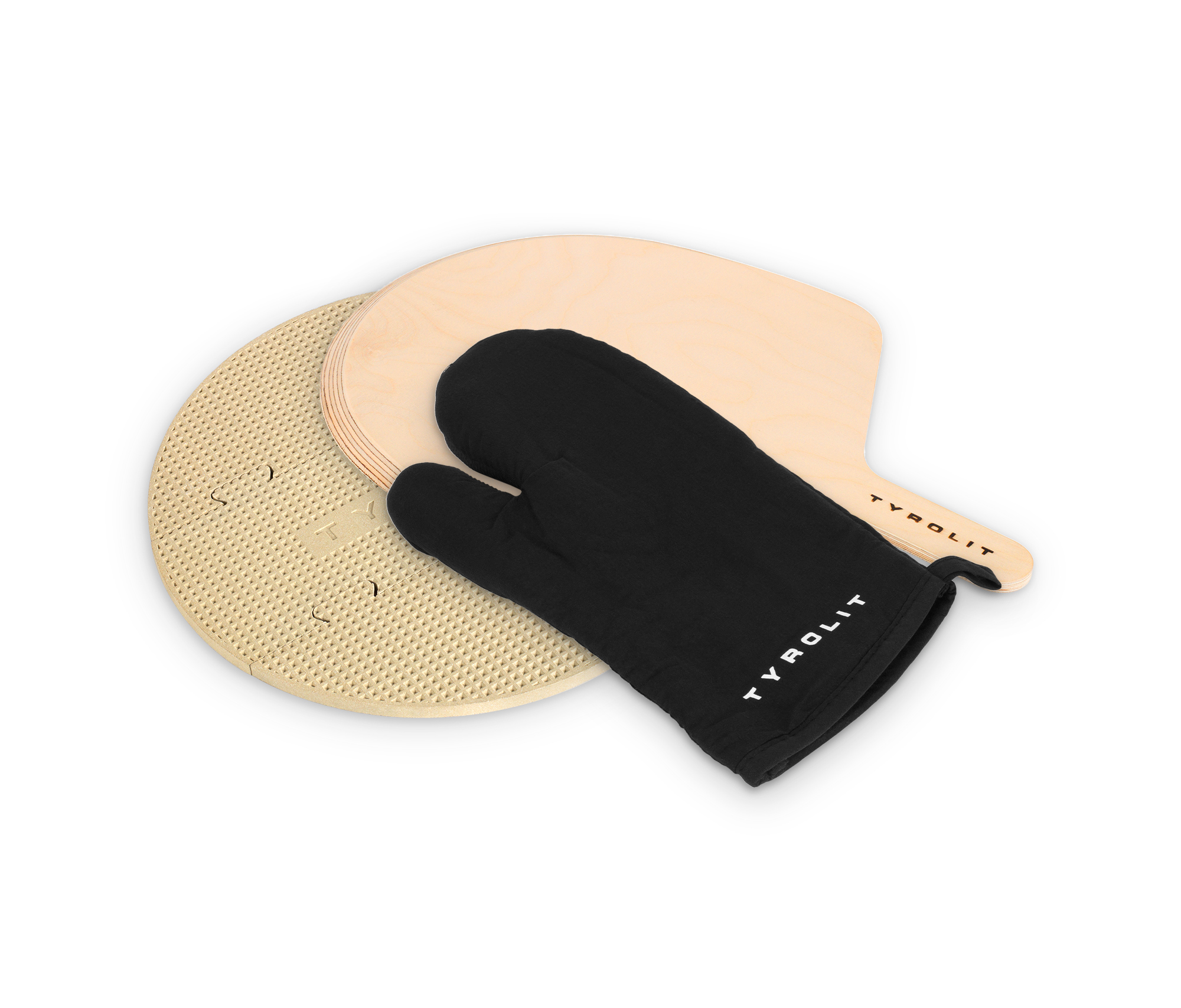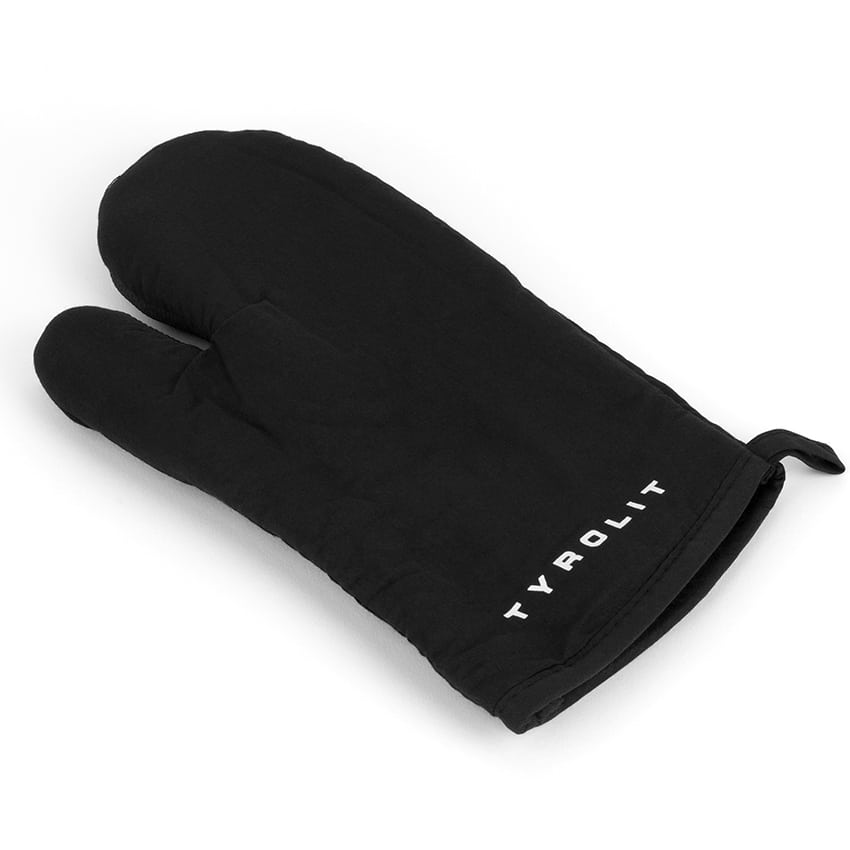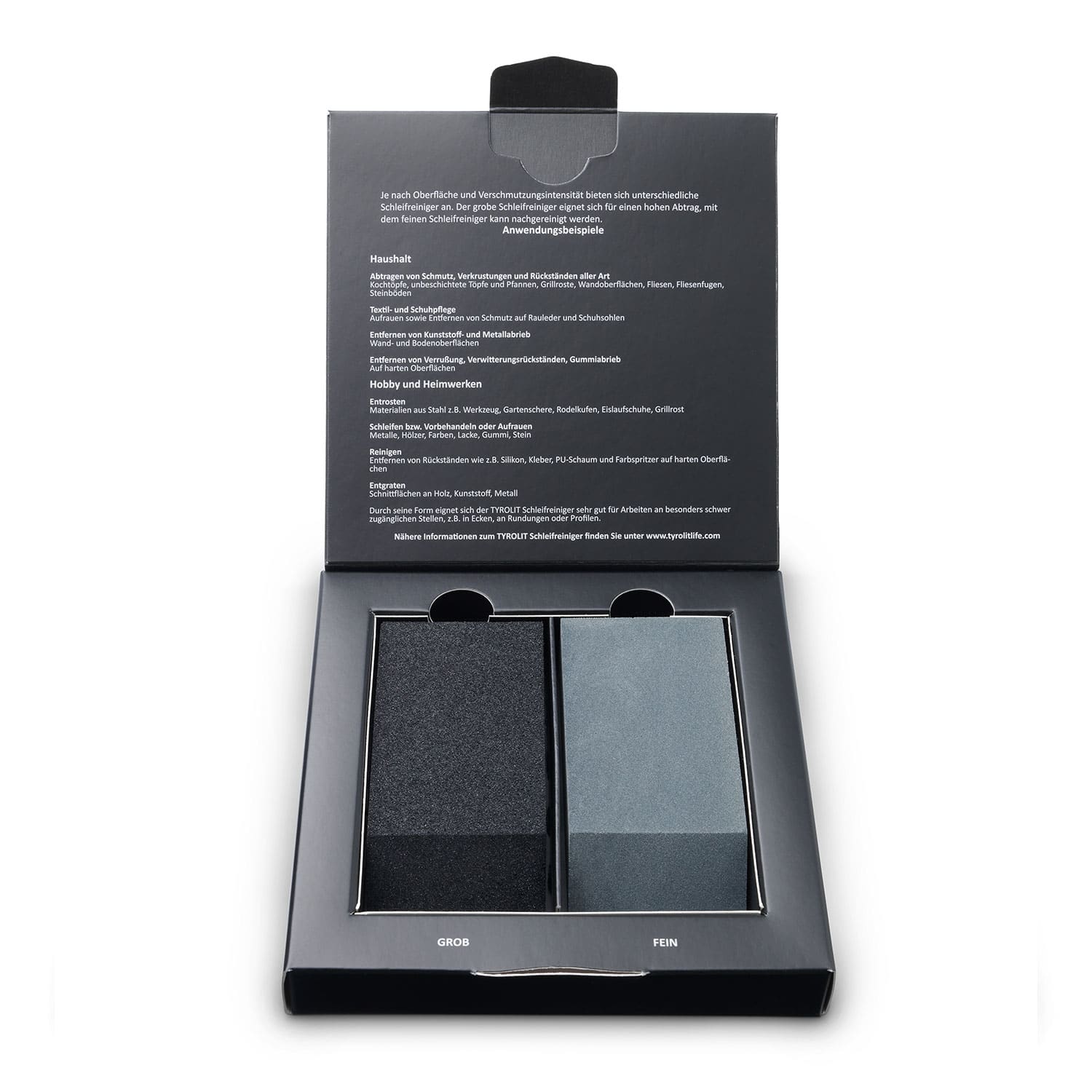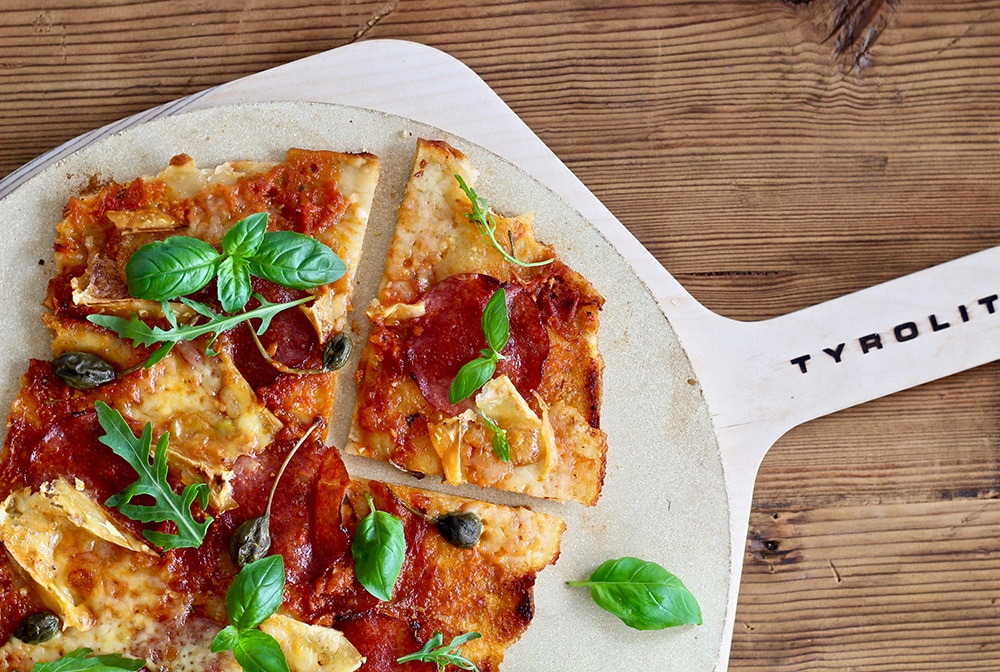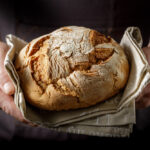5 Tips for the Correct Use of a Pizza Stone

Delicately melting cheese, fruity and spicy tomato sauce, aromatic herbs, and of course, crispy baked dough – a pizza stone makes it all possible! A good pizza is a true piece of culinary artistry. Consequently, the perfect tool for this baking craft cannot be missing: Properly used, a pizza stone lets you bake a pizza just like you would get on a vacation in Italy
We want to clear up all questions and uncertainties about the optimal use of the pizza stone with our 5 tips. After this pizza stone masterclass, nothing will stand in the way of your pizza enjoyment!
What does a pizza stone do – is it useful?
A pizza stone adds a touch of Italian flair to the home kitchen, as it enables the creation of the signature crispiness of a pizza crust. However, the benefits of a pizza stone extend far beyond that: bread or tarte flambée also turn out wonderfully on a pizza stone, in a way that simply wouldn’t be possible with a baking sheet
So a pizza stone is not only a sensible purchase for its eponymous dish, but also a great option for anyone who is passionate about baking. But how does the pizza stone ensure authentic crunchiness?
This is due to its excellent thermal properties: for a crispy crust, the heat is evenly distributed and released. The pizza stone absorbs excess moisture.
In addition to fireclay stones, cordierite pizza stones are particularly popular. This mineral is extremely heat resistant and ensures rapid heat transfer. This usually makes it somewhat more resistant to temperature fluctuations than fireclay. In addition, cordierite has finer pores and is therefore easier to clean. Because of these advantages, we at Tyrolit Life also rely on the cordierite pizza stone.
Pizza Stone – All Facts on Materials, Application, and Maintenance
The pizza stone has become a must-have in countless kitchens. In this post, we’ll take a look at interesting facts about this kitchen helper – one thing in advance: the pizza stone is far more versatile than you might think.
How to Properly Use a Pizza Stone: Here’s How
You see: a pizza stone is a valuable helper in the kitchen. So that you can get the most out of your pizza stone and delight your guests with crispy creations, here are our 5 valuable tips for you.
1. Preheating – the A and Z
Before you start baking, make sure to properly preheat the pizza stone. It should be preheated for between 30 and 45 minutes to ensure you achieve the best results later on. Depending on whether you’re using an oven or a grill, select a temperature ranging from 230 to 300 degrees Celsius. Before using it for the first time, it’s recommended to season the pizza stone and conduct a test run.
Some pizza stones also feature a unique surface pattern on the underside – like the waffle texture of the Tyrolit Life pizza stone – that allows for especially efficient heating.
2. Making a good impression with the baking stone in the oven
Your oven will quickly transform into a professional pizza oven with the pizza stone. But it’s not just this Italian classic that excels; feel free to experiment with tarte flambée, bread, focaccia, and even cookies. You’ll be amazed at what you can accomplish with a pizza stone.
Ideally, place the pizza stone on the grate so that it can absorb the heat well. The best way to bake the pizza is with top and bottom heat.
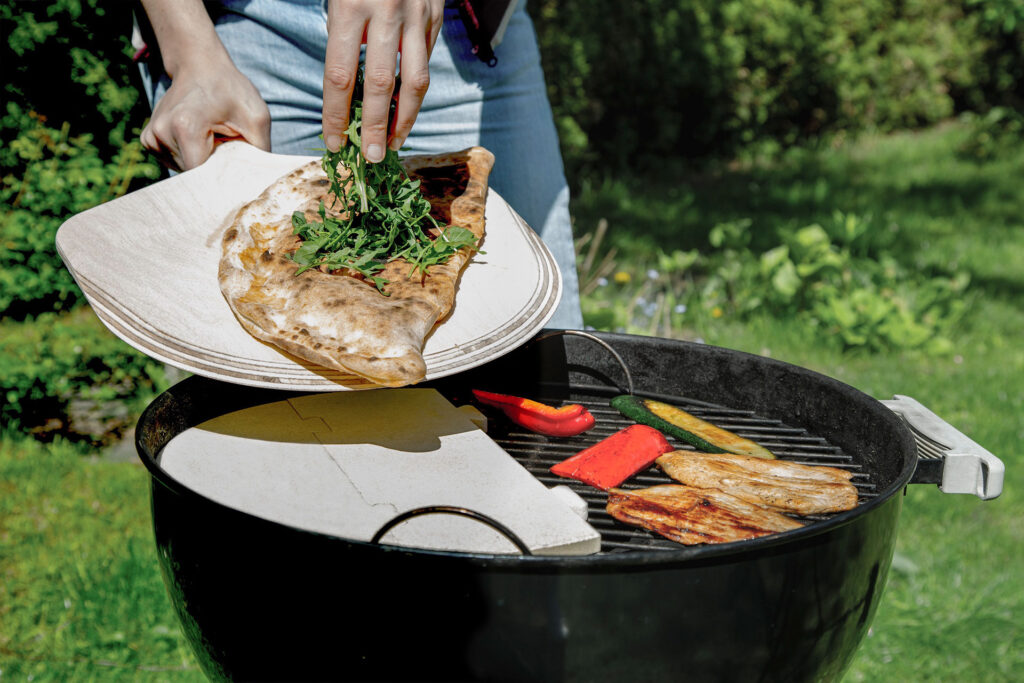
3. Want grilled pizza?
Why only bake indoors when you can also enjoy crispy pizza outdoors? With the pizza stone on the grill, pizza and co. can be prepared with a slightly smoky aroma.
The stone should be carefully brought to temperature. Also, the stone should not cover the entire grate, so that no heat build-up occurs – so it is best to leave at least 2 centimeters on all sides.
Our space-saving Flex pizza stone is ideally suited for this purpose and performs exceptionally on the grill.
4. From the shovel to the stone and back again
In addition to heating the pizza stone, there’s another crucial hot phase in pizza baking. The question is: How do you transfer the pizza onto the pizza stone without damaging it? This is where a pizza peel comes in handy, like the one that comes with the Tyrolit Life pizza stone.
First, you have the option to place the rolled-out dough directly onto the pizza peel dusted with semolina or flour. There, you can add the toppings to the pizza and then simply slide it onto the stone. However, you should act quickly to prevent the moist pizza dough from making the flour on the peel sticky.
Alternatively, you can prepare the pizza as usual on a floured surface, then flour the pizza peel as well. With a brisk forward swing, slide the peel under the pizza and carry it to the oven.
If the pizza does not want to slip off the shovel right away, gentle shaking can help. Finally, the ready-baked pizza can be easily picked up with the pizza shovel.
Theoretically, baking paper could also be used. But then the chosen temperature should not exceed about 220 degrees to 230 degrees (depending on the baking paper). A pizza stone can also be heated much hotter for the optimal crust and absorb excess moisture during baking. That’s why we recommend not working with parchment paper on the pizza stone as a rule.
The approach changes when a pizza peel is not available. In such instances, one could alternatively use a cutting board or an inverted baking sheet, covering it with parchment paper, to transfer the pizza onto the pizza stone. It’s important to use enough flour to seamlessly move the pizza from the parchment paper to the stone, as the paper should not be baked along with the pizza.
5. Clean pizza stone – less is more!
After the enjoyment comes the cleaning. Good care helps you to enjoy the pizza stone for a long time. But don’t worry: here, too, less is often more.
If you wish to clean your pizza stone, ensure it is fully cooled first. Then, you can wipe off any coarse residues with a dry cloth. For more stubborn stains, a cautious application of ceramic hob cleaner can also be effective – depending on the manufacturer of the pizza stone.
Do not place the pizza stone in the dishwasher or soak it in a water bath. You can then continue cleaning with a damp cloth and, if necessary, a soft brush. Allow the stone to dry out completely in a well-ventilated place – but in principle avoid getting the pizza stone wet, as it can break.
Over time, a patina will form on the pizza stone. This is completely normal and does not affect the baking outcome.
Cleaning Your Pizza Stone – 7 Tips for Keeping It Clean
How do you clean a pizza stone? Fortunately, it’s not at all difficult to get the pizza stone clean again. The principle is: less is more! To ensure the few steps needed for cleaning the pizza stone are effectively applied, we have put together 7 useful tips for you here.
Tyrolite pizza stone – what waffles have to do with pizza
With these 5 tips, the upcoming pizza night is definitely secured! We recommend our Tyrolit Life pizza stone for this.
Crafted from cordierite, the pizza stone provides optimal conditions for achieving a perfect crust on a variety of baked goods. This is largely thanks to the unique waffle structure on the bottom, which secures optimal heat transfer and distribution.
Our divisible Tyrolit Life Pizza Stone Flex is perfect for the grill, providing ample space for the pizza while also ensuring sufficient clearance on the grate.
Thanks to the included pizza shovel, all utensils are ready to prepare delicious pizzas, tarte flambée, breads and much more.
Cordierite pizza stone – All details about the material
In this article, we delve into the world of pizza baking, with an emphasis on the traditional pizza stone that forms the basis for crispy, delicious pizzas. You will also learn about the benefits of cordierite.
FAQ
What do you have to consider with a pizza stone?
How do I use a pizza stone in the oven?
How long does a pizza stone need to be preheated?
How to use a new pizza stone?

